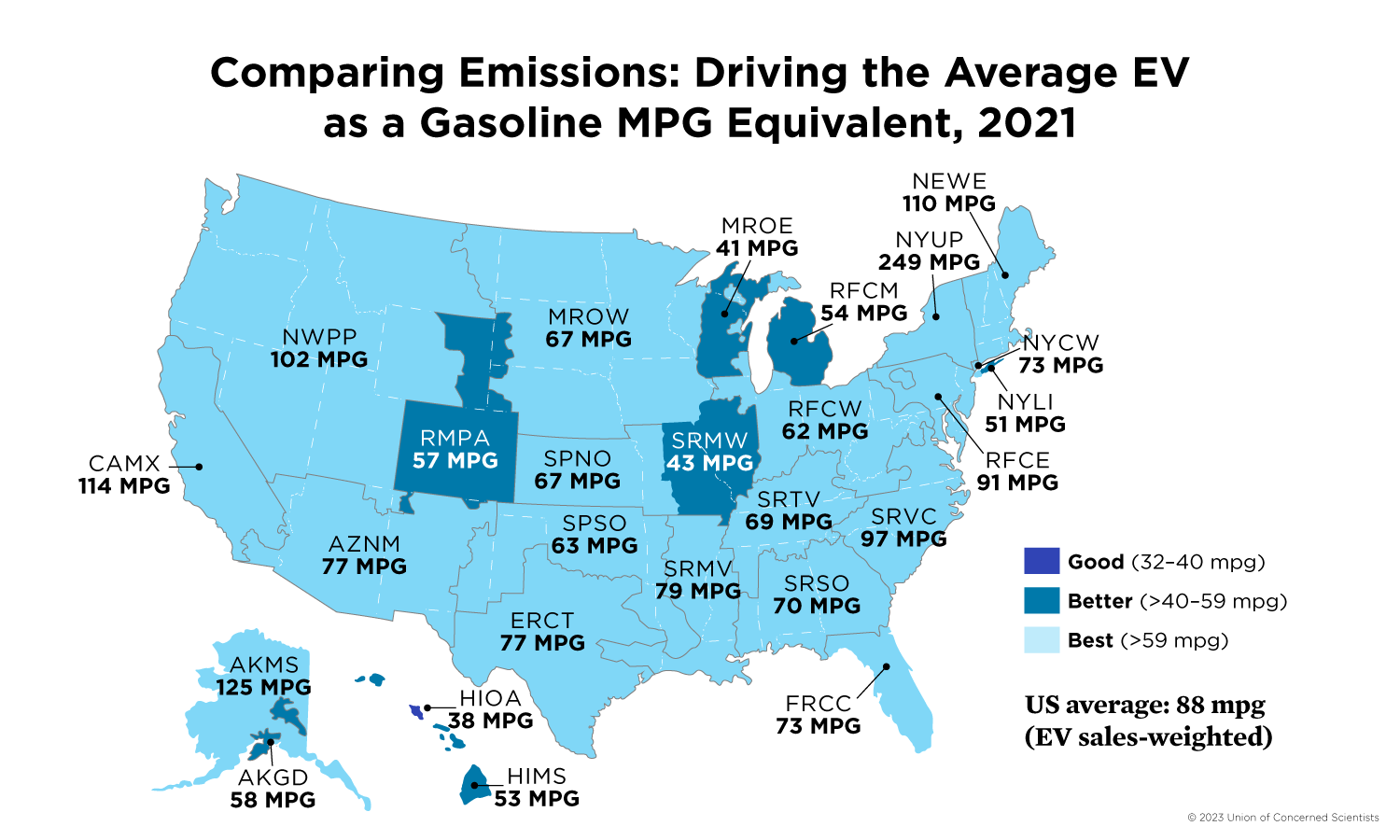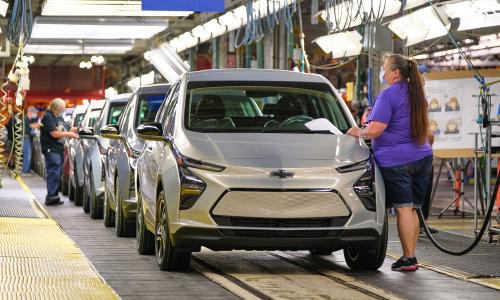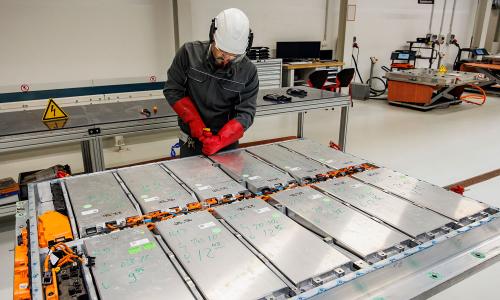Electric cars run at least partially on electricity. Unlike conventional vehicles that use a gasoline or diesel-powered engine, electric cars and trucks use an electric motor powered by electricity from batteries or a fuel cell.
Not all electric vehicles (or “EVs”) work the same way. "Plug-in hybrids" offer both a gasoline or diesel engine and an electric motor: the motor is powered by a battery that can be recharged by plugging in. Other EVs forgo liquid fuels entirely, operating exclusively on electricity ("battery electric" vehicles). Still others power an electric motor by converting hydrogen gas into electricity ("hydrogen fuel cell" vehicles).
Conventional hybrid vehicles also have an electric motor, but aren’t considered EVs as they can’t be plugged-in.

In terms of air pollution and greenhouse gas emissions, electric cars and trucks are often cleaner than even the most efficient conventional vehicles. Exactly how clean depends on the type of vehicle and the source of the electricity. When battery electric EVs are powered by the cleanest electricity grids, greenhouse gas emissions from EVs are comparable to a car getting over 100 miles per gallon. When charged exclusively with renewable electricity like solar or wind, charging and operating an EV can be nearly emission free.
Though electric cars can be more expensive to purchase than their conventional counterparts, the higher upfront cost is often reduced through federal and state incentives. The cost to refuel an electric car can also be a fraction of the cost of gasoline, meaning that electric cars can have a lower total cost of ownership. Switching to an electric car can save on average over $700 a year in fueling costs, and over one thousand dollars a year in some cities.
What kind of electric car should I consider?
Plug-in hybrids can offer increased environmental performance and lower refueling costs compared to conventional vehicles. Because they are rechargeable from an outlet, they replace miles that would have been driven on gasoline with electricity, using the gasoline engine on longer trips. To use a plug-in hybrid effectively, drivers do need access to a place to park and plug-in, though a regular 120V outlet is usually sufficient. And since most plug-in hybrids are passenger cars, prospective buyers shouldn't regularly require space for more than five occupants, and they shouldn't need to tow. Learn more about how plug-in vehicles work.
Battery-electric cars use electricity as their only fuel, so it is important to match the battery range to the intended use of the vehicle. However, recharging away from home is becoming easier as public and workplace charging stations become more widely available. And since battery-electric cars have no tailpipe emissions and replace gasoline with electricity, they can be some of the greenest cars available, perfect for climate-conscious commuters or multi-car households that take lots of short-distance trips. Learn more about how battery-electrics work.
For drivers interested in the cutting-edge, fuel cell vehicles are a small but growing segment of EVs, particularly in California. These vehicles offer some significant benefits—including fast refueling times and long driving ranges—but also require hydrogen refueling stations, which at present aren't widely available. Learn more about how fuel cells and fuel cell vehicles work.
Conventional hybrids may also make sense in cases where electric cars don’t match a driver’s needs. Hybrids retain the range and convenience of conventional vehicles, while offering the increased efficiency of an electric motor. Since they derive all their power from gasoline or diesel, non-plug-in hybrids aren’t considered electric vehicles. Learn more about how hybrids work.




